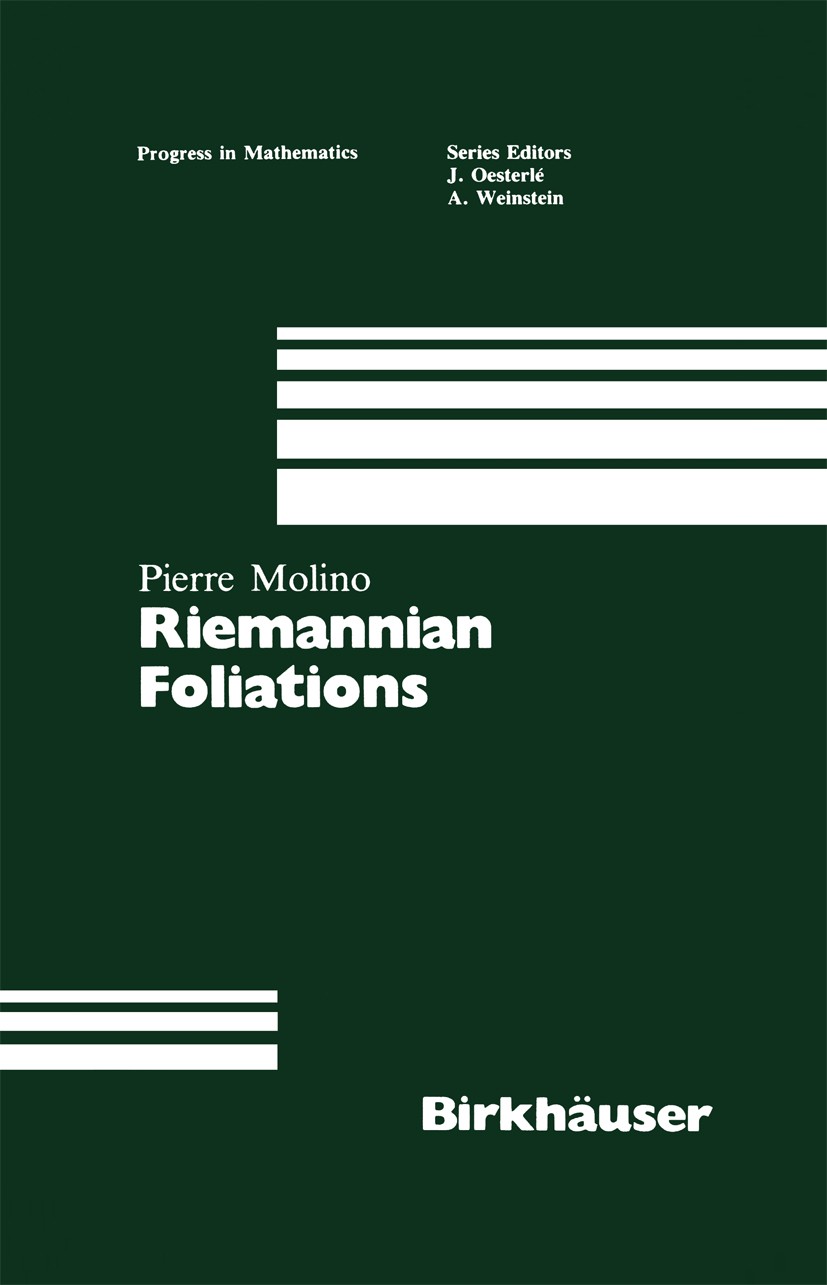| 书目名称 | Riemannian Foliations | | 编辑 | Pierre Molino | | 视频video | http://file.papertrans.cn/831/830303/830303.mp4 | | 丛书名称 | Progress in Mathematics | | 图书封面 |  | | 描述 | Foliation theory has its origins in the global analysis of solutions of ordinary differential equations: on an n-dimensional manifold M, an [autonomous] differential equation is defined by a vector field X ; if this vector field has no singularities, then its trajectories form a par tition of M into curves, i.e. a foliation of codimension n - 1. More generally, a foliation F of codimension q on M corresponds to a partition of M into immersed submanifolds [the leaves] of dimension ,--------,- - . - -- p = n - q. The first global image that comes to mind is 1--------;- - - - - - that of a stack of "plaques". 1---------;- - - - - - Viewed laterally [transver 1--------1- - - -- sally], the leaves of such a 1--------1 - - - - -. stacking are the points of a 1--------1--- ----. quotient manifold W of di L..... -‘ _ mension q. -----~) W M Actually, this image corresponds to an elementary type of folia tion, that one says is "simple". For an arbitrary foliation, it is only l- u L ally [on a "simpIe" open set U] that the foliation appears as a stack of plaques and admits a local quotient manifold. Globally, a leaf L may - - return and cut a simple open set U in several plaques, sometime | | 出版日期 | Book 1988 | | 关键词 | Division; Finite; Isometrie; Partition; Riemannian geometry; Vector field; differential equation; equation; | | 版次 | 1 | | doi | https://doi.org/10.1007/978-1-4684-8670-4 | | isbn_softcover | 978-1-4684-8672-8 | | isbn_ebook | 978-1-4684-8670-4Series ISSN 0743-1643 Series E-ISSN 2296-505X | | issn_series | 0743-1643 | | copyright | Springer Science+Business Media New York 1988 |
The information of publication is updating

|
|
 |Archiver|手机版|小黑屋|
派博传思国际
( 京公网安备110108008328)
GMT+8, 2025-11-13 05:34
|Archiver|手机版|小黑屋|
派博传思国际
( 京公网安备110108008328)
GMT+8, 2025-11-13 05:34


